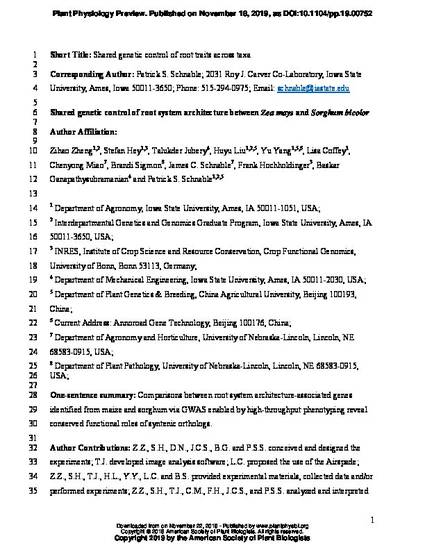
Determining the genetic control of root system architecture (RSA) in plants via large-scale genome-wide association study (GWAS) requires high-throughput pipelines for root phenotyping. We developed CREAMD (Core Root Excavation using Compressed-air), a high-throughput pipeline for the cleaning of field-grown roots, and COFE (Core Root Feature Extraction), a semi-automated pipeline for the extraction of RSA traits from images. CREAMD-COFE was applied to diversity panels of maize (Zea mays) and sorghum (Sorghum bicolor), which consisted of 369 and 294 genotypes, respectively. Six RSA-traits were extracted from images collected from >3,300 maize roots and >1,470 sorghum roots. SNP-based GWAS identified 87 TAS (trait-associated SNPs) in maize, representing 77 genes and 115 TAS in sorghum. An additional 62 RSA-associated maize genes were identified via eRD-GWAS. Among the 139 maize RSA-associated genes (or their homologs), 22 (16%) are known to affect RSA in maize or other species. In addition, 26 RSA-associated genes are co-regulated with genes previously shown to affect RSA and 51 (37% of RSA-associated genes) are themselves trans-eQTL for another RSA-associated gene. Finally, the finding that RSA-associated genes from maize and sorghum included seven pairs of syntenic genes demonstrates the conservation of regulation of morphology across taxa.
Available at: http://works.bepress.com/baskar-ganapathysubramanian/93/

This is a manuscript of an article published as Zheng, Zihao, Stefan Hey, Talukder Jubery, Huyu Liu, Yu Yang, Lisa Coffey, Chenyong Miao et al. "Shared genetic control of root system architecture between Zea mays and Sorghum bicolor." Plant Physiology (2019). DOI: 10.1104/pp.19.00752. Posted with permission.